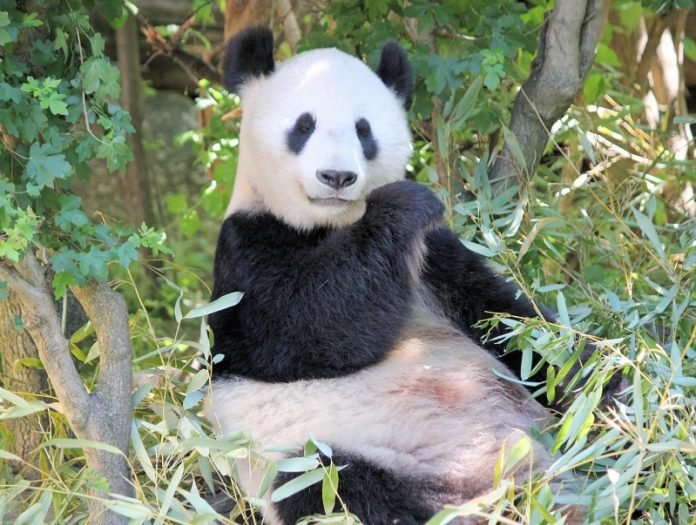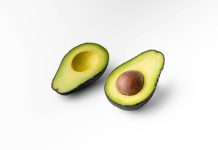
Pandas have a strange mix of have herbivore and carnivore traits.
Giant pandas are extremely specialized herbivores that feed almost exclusively on highly fibrous bamboo, despite descending from primarily flesh-eating carnivores.
New research suggests this switch to a restricted vegetarian diet wasn’t as big an evolutionary leap as it may first seem.
Published in Current Biology, researchers from the University of Sydney and Chinese Academy of Science used an approach called nutritional geometry – that considers how mixtures of nutrients and other dietary components influence health and disease, rather than focusing on any one nutrient in isolation – to assess the macronutrient mix of the giant panda’s diet.
“This study demonstrates the importance of considering both foods and nutrients in understanding the evolutionary ecology of animals – exactly what nutritional geometry is designed to do,” said Professor David Raubenheimer from the University of Sydney’s Charles Perkins Centre and School of Life and Environmental Sciences.
Despite the plant-based diet of giant pandas, the protein and carbohydrate content of that diet looks more like that of a hypercarnivore – animals that obtain more than 70 percent of their diet from other animals.
About 50 percent of the panda’s energy intake comes in the form of protein, placing them alongside feral cats and wolves. The macronutrient composition of the panda’s milk is also like other carnivores.
“Based on what they eat, giant pandas absolutely belong to the herbivores – but considering the macronutrient composition of the ingested and absorbed diets, they could also belong to the carnivores,” said co-author Fuwen Wei from the Chinese Academy of Science in Beijing.
Giant pandas have developed herbivore traits, including a skull, jaw musculature and teeth that are adapted for fibrous diets, and a ‘pseudo-thumb’ used for handling bamboo. They also have lost the ability to taste umami, which is often associated with meat eating.
However giant pandas also have a digestive tract, digestive enzymes, and gut microbes that resemble that of carnivores and not herbivores.
This suggests minimal evolutionary modification from their ancestral state was needed to deal with the macronutritional properties of bamboo.
The researchers say the findings can help resolve long-standing questions concerning giant panda evolution, including the unusual transition from carnivorous ancestry to extreme specialised herbivory.
“In fact, the transition was likely more superficial than assumed, combining substantial adaptation to new food types with relatively smaller changes in macronutrient handling,” they write.
“It can also explain why pandas have a strange mix of have herbivore and carnivore traits,” explained Professor Raubenheimer.
“They are herbivores with respect to the foods they eat, but the macronutrient mix of the diet is more like carnivores”.
The team will continue to study the evolution and adaptation of the giant panda, and also apply that work to the panda’s conservation management as an endangered species.
Source: University of Sydney.



